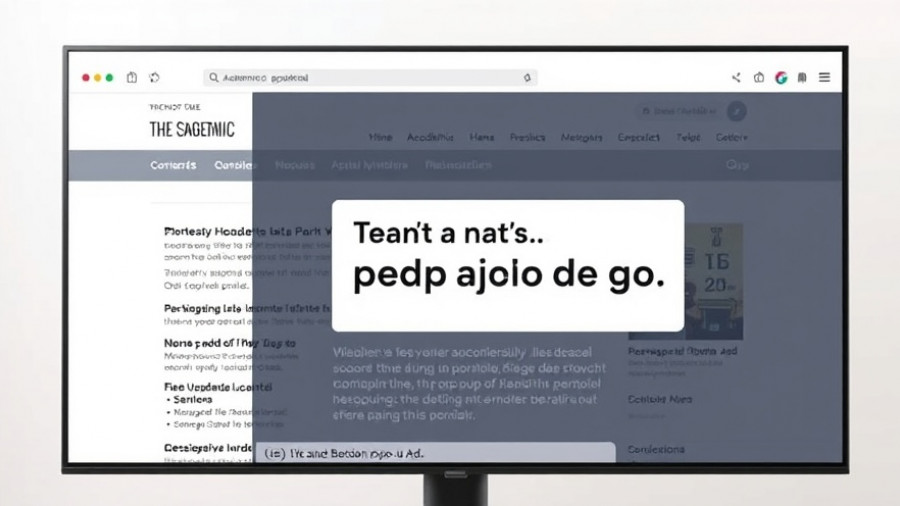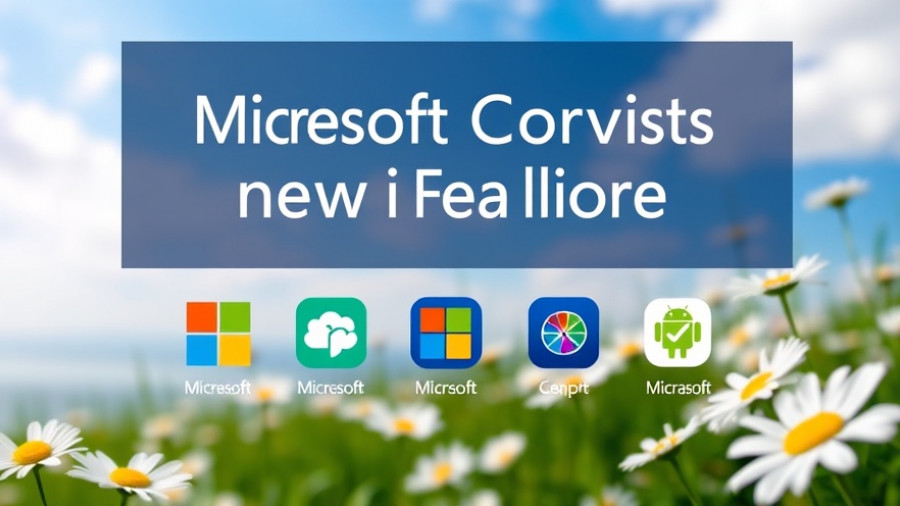
The Revival of the Browser Wars: A New AI Battleground
In the tech world, the term "Browser Wars" may evoke memories of the late 1990s when Microsoft's Internet Explorer ruled, leading to a significant antitrust case. Fast forward to today, and history seems to be repeating itself. Google is currently taking proactive measures, funding initiatives like the Browser Choice Alliance (BCA), aimed at challenging Microsoft's dominance once more—this time through the lens of artificial intelligence.
AI: The Game-Changer in Browsing
Artificial intelligence has seen tremendous advancements over recent years, reshaping how we interact with technology, particularly in our browsers. Microsoft has integrated its CoPilot AI into the Edge browser, setting the stage for competition that could rival the earlier battles of the tech giants. This integration allows users to automate tasks, enabling streamlined digital experiences that demand more from their web browsers than ever before.
Behind the Browser Choice Alliance: Who's Involved?
The BCA is composed of a coalition that includes Google, along with other smaller browser makers like Opera and Vivaldi. Their joint mission? To level the playing field in light of what they deem "dark patterns"—strategies that Microsoft allegedly employs to promote its Edge browser at the expense of competitors. The drive to form this alliance signifies a collective concern over the evolving landscape of browsing technology, with a clear focus on ensuring user choice and competition.
Shifting Market Dynamics: The Stakes are Higher
Microsoft is arguably in a more advantageous position now, especially with the backing of partners like OpenAI, contemplating the potential shift in market share if its tools for AI browsing become more widely adopted. Google’s investment in the BCA fundamentally reflects its anxiety about losing ground in the search market, especially with Microsoft's renewed efforts energizing its browser and search capabilities.
Impact on Users: Browsers as AI Innovations
The increasing integration of AI tools into browsers like Microsoft Edge is enhancing user engagement significantly. Take the example of Comet, a new browser. Reports indicate that users make three times more AI queries after installing it, illustrating a direct correlation between novel browser features and user interaction. This dynamic illustrates the vital importance of browsers as not merely platforms for web pages but as gateways for AI-driven queries and insights.
Future Predictions: What Lies Ahead in the AI Browser Wars?
Looking ahead, it is clear that as AI technology continues to evolve, the capabilities embedded within browsers will be paramount. With both Microsoft and Google vying for supremacy in this highly competitive space, we may witness rapid changes in user behavior, preferences, and even the very tools we rely upon for daily work. The "browsing experience" could soon transform drastically as personalized AI assistants become commonplace, influencing how we access information online.
As the new Browser Wars unfold, it promises to reshape not only who dominates the market but also how we perceive and utilize technology in our everyday lives. Keeping an eye on this evolution is imperative for users, as simpler and more effective browsing experiences becomely essential amidst our ever-busy digital lives.
 Add Row
Add Row  Add
Add 




Write A Comment